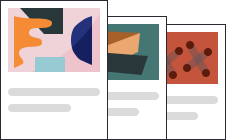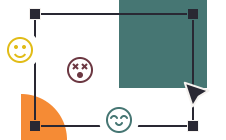Customer Feedback Retrospective





The Customer Feedback Retrospective template is designed to help product teams analyze and act on user feedback.
This retrospective focuses on understanding what customers like, addressing their complaints, identifying actionable improvements, and deriving key learnings to guide future product development.
By systematically reviewing positive and constructive feedback, teams can celebrate successes, prioritize changes, and continuously improve the product based on real user insights.
Let's take a look at the 4 core questions that are tackled in this retrospective template.
1. Positive Feedback
What positive comments did we receive? Which features or aspects were most appreciated?
Let's highlight and celebrate the positive comments and feedback we've received from our customers. Which features or aspects of our product were most appreciated? This will help us understand what we're doing right and how we can continue to leverage our strengths.
Examples:
- "The new UI is very intuitive."
- "Customer support is excellent and responsive."
- "The performance has significantly improved."
2. Constructive Feedback
What were the common complaints or issues reported by customers?
It's time to review the constructive feedback and common complaints from our customers. What issues or problems have been reported? Understanding these pain points will allow us to identify areas that need improvement and prioritize our efforts effectively.
Examples:
- "The mobile app crashes frequently."
- "Feature X is difficult to use and not well-documented."
- "The onboarding process is confusing."
3. Improvements
What actions can we take to address the constructive feedback?
Based on the constructive feedback we've discussed, let's brainstorm actionable steps we can take to address these issues. What immediate and long-term actions can we implement to enhance our product and improve the customer experience?
Examples:
- Immediate: Fix mobile app crashes (Assigned to Team A)
- Long-Term: Redesign Feature X for better usability (Assigned to Product Team)
- Enhancement: Improve onboarding documentation and tutorials (Assigned to Documentation Team)
4. Key Learnings
What did we learn from the feedback that can guide our future product development? (or any other relevant field)
Reflecting on all the feedback, let's identify key learnings that can guide our future product development. What insights have we gained, and how can they influence our decisions moving forward? This will help us continuously improve and stay aligned with customer needs.
Examples:
- Users value intuitive design and responsive support highly.
- Common pain points include stability issues and the need for better documentation.
- Continuous monitoring and user engagement are crucial for identifying areas for improvement.

The 4 elements of Customer Feedback Retrospective







